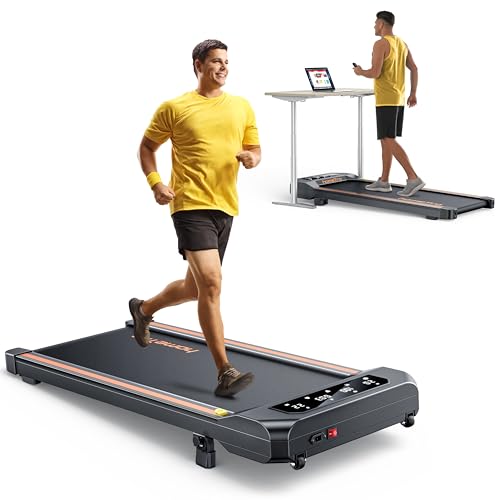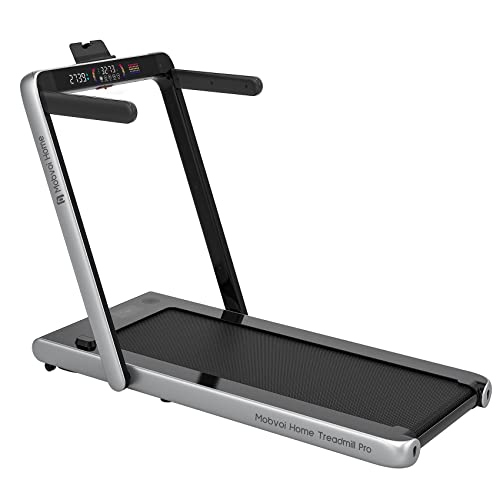You'll Never Guess This Is Treadmill Incline Good's Secrets
Charles Porteou…
0
5
01.05 08:46
 is treadmill incline good (official Bravejournal blog) For You?
is treadmill incline good (official Bravejournal blog) For You?You can achieve your fitness goals more efficiently by using the treadmill's incline settings. It is important to understand the impact of increasing the slope on your muscles and joints.
Start with a 0% gradient to warm up, and then increase it to 2-3 percentage. Walking at this level mimics the pace you'd walk if going for a quick grocery trip.
Increased Calories Burned
Walking or running uphill on a smallest treadmill with incline burns more calories than on flat surfaces. The incline mimics running or walking uphill, which requires more muscle effort. It burns more calories as a result particularly when the handrails are held or you use the treadmill's built-in resistance system to perform strength training.
The incline feature of the treadmill with incline uk can provide variety to your workout, and can help avoid boredom. It is important to start with a lower incline and gradually increase the intensity as you get more comfortable with the increased intensity of your workout. This reduces the risk of injury.
Incline treadmill workouts target different muscles that include the core and legs. This leads to a more effective and well-rounded exercise. Walking or running on an incline, for example, targets the quadriceps and calves, which helps strengthen the lower body. While walking at an inclined pace, you target your glutes and hamstrings, that tone the hips and upper limbs.
A treadmill that has an incline feature helps to reduce the strain on the knees, ankles and shins during a walk or run. This is because when you place your foot on the treadmill that has an incline, there's a smaller space saving treadmill with incline between the bottom of the shoe and the ground. This decreases the stress put on the bones in joints, which makes an incline treadmill workout ideal for people suffering from joint pain.
In addition, incline treadmill workouts can be beneficial for people who have difficulty losing weight by eating a healthy diet. To lose weight, you need to create a calorie deficit by burning more calories than you consume. This can be achieved by walking or running uphill on a treadmill. This will help you burn more calories and tone your legs faster. It is important to keep in mind that most of the calories you burn during exercise are glucose (blood sugar) and not fat. So, running or walking at a high elevation can result in higher blood sugar levels. This should be taken into consideration in the event that you are taking diabetes medication or suffer from a medical condition that affects the metabolism of glucose.
Increased Tone of Muscle Tone
Treadmill exercises that are incline-based boost the tone of your glutes and legs by helping you to burn more calories. These exercises also build your muscles, which helps improve posture and build strength. This will also help improve your balance and coordination. Walking or running up a steep hill will increase the amount of upper-body movement, which helps you burn more calories.
You can boost the intensity of your cardio workout without changing your speed using the incline feature. This is a great option for those who struggle with higher-speed exercise or who are new to fitness as it reduces the risk of sustaining injuries. This workout also enables you to get the same health benefits of regular running, such as better cardiovascular health and a lower blood pressure without having to maintain the highest intensity of physical activity.
Incorporating incline-based walking or running into your workout routine can also help you to build your stamina and increase your endurance. You will feel more confident and energized when you exercise, and you will be more able to exercise for longer periods of time.
Walking and running on a slight slope will also cause your heart rate to rise which is beneficial to cardiovascular health. It is crucial to remember that if you're a novice to exercising on an incline, it's best to start at a low intensity and increase it gradually as time goes on. You should also check your heart rate on a regular basis to ensure that you're not straining your body too much. This is particularly important when you are new to incline workouts.
A steady pace on a flat surface can get boring for the majority of people, but by increasing the slope you are forcing your body to work an entirely different set of muscles. This makes the workout more challenging and exciting and also encourages the growth of muscles.
Treadmills are designed to support the incline of exercises, and many come with handrails that can be utilized for a workout involving the upper body and the legs. Most models will include an option to measure your heart rate, which can help to ensure you aren't exercising too intensely. This is especially crucial if you're new to exercising, since it could prevent injuries, such as straining your back or knees.
Heart Rate Increase
Incorporating an incline-based training routine into your treadmill workouts is one of the most effective methods to burn calories, build lower body strength and strengthen your legs. It also boosts your cardiovascular system and boosts your VO2 max (maximum oxygen consumption).
Running or walking on an incline on a treadmill or exercise path outdoors adds a new challenge to your workout. Your heart rate increases as your muscles and joints adjust to the elevation increase. Additionally that walking on an incline causes your feet to strike the ground at a more gradual angle, which could reduce impact and decrease wear and tear on your knees and hips. This kind of exercise is used by a number of top trainers to decrease joint strain and injuries.
When used in conjunction with a heart-rate monitor or smartwatch, incline treadmill exercises can aid in keeping your intensity at the ideal level to achieve your fitness goals. If you're just beginning to get into incline treadmill workouts, start with a low to moderate speed and gradually increase your incline. For an intensive incline workout you can do interval training which combines periods of increased incline with flat or less incline segments.
Incorporating an incline into your exercise routine can make running or walking more difficult even for those who are accustomed to regular cardio. For instance, if you regularly walk at a steady 3mph, you can burn 200 calories more when exercising on an upward slope. If you run at a steady pace of 6mph and you'll burn 228 calories when you run on an incline. For beginners, it's advised to increase the incline by no more than 5% to avoid muscle strain or injury. Try varying the level of incline on every treadmill session to get the optimal results. This will allow you to maintain your consistency and force your body to keep improving as time passes. It is also essential to use a treadmill with a cushioned base as well as comfortable handles. This makes your workouts enjoyable and safe for everyone. It will also allow you to exercise longer and sweat without feeling uncomfortable.
Reducing the impact on joints
The incline feature on treadmills lets you work out at a higher intensity level without increasing the time or speed of your exercise. This feature can help burn more calories, increase endurance and strengthen your muscles. Some people aren't keen to use the incline setting as it can cause injury or pain in their knees, hips, and lower back. To avoid this utilize the incline feature correctly and increase the incline gradually as you gain strength and stamina.
Incline training activates a greater number of muscle groups than running flat, including calves, hamstrings, and glutes. It also helps tone and strengthen these muscles, improving lower body strength and overall definition. Inline training also targets the core and helps in balancing and posture. It's an excellent option for people who have low back pain and can't be on the floor to do traditional exercises for the core.
Kevin Plancher, orthopaedic surgery and sports medicine at Plancher Orthopaedics & Sports Medicine says that a small tilt in a treadmill could lower the strain on your knees and hips while still providing an excellent exercise. Running at an angle that is slight can help avoid shin splints. It also promotes greater endurance in comparison to running on flat surfaces.
The inclusion of a slight incline into your treadmill workout could reduce the chance of injury to other joints of the body, including your ankles and feet. Many physical therapists recommend using the incline feature for patients who suffer from osteoarthritis in the knee. It has been proven to decrease discomfort and improve quality of life for those who suffer from this condition.
When you use the incline feature of a treadmill, you'll need to be more cautious about the amount of pressure you place on your knees and hips. Overuse injuries can be caused by too much incline because the muscles of the knees and hips have to work harder in order to control the movements. This can cause joint pain and injury.
 If you're unsure how to set up your incline, a coach or health professional can help. It is important to begin with a low level of incline and increase it gradually as your body adjusts. It is important to warm your muscles before beginning an exercise on an incline to prepare them for the increase in workload.
If you're unsure how to set up your incline, a coach or health professional can help. It is important to begin with a low level of incline and increase it gradually as your body adjusts. It is important to warm your muscles before beginning an exercise on an incline to prepare them for the increase in workload. 








